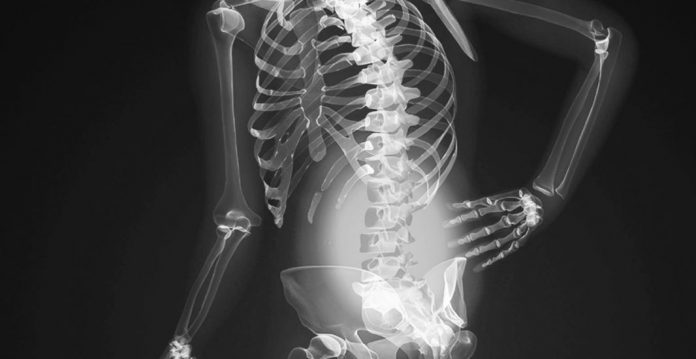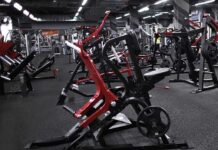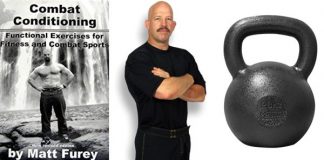Give me a few minutes and I’ll show you some workout tips to avoid weak bones! An estimated 10 million Americans have osteoporosis, and another 34 million have low bone mass, (osteopenia).
A disease without any symptoms, osteoporosis affects about 20 percent of men and 80 percent of women. Since bones gradually become weaker, they are more likely to break by a minor fall or, if left untreated, even from simple things like a sneeze. The most frequent fracture sites are hip, wrist and spine, although any bone in the body can be affected.
A diagnosis of osteopenia or osteoporosis can be scary, leading some to avoid exercisse due to fear it’ll cause fractures. The truth is that those with low bone mass should try to exercise regularly. Activity has been shown to help alleviate problems with osteoporosis, and it slows bone loss even after it has already begun.
Before starting a fitness program, you have to talk with your physician for guidelines, as degree of bone loss determines what type of exercise is best. Physicians can assess bone density and fracture risk by scanning your body with a special type of X-ray machine. In addition to exercise, treatment may include dietary modifications and/or estrogen replacement therapy.
The more knowledge you have in regards to this condition, the more you can do to help prevent its onset. To create strength and bone mass, both weight-bearing and resistance training workouts are ideal. Weight-bearing work outs are those that require the bones to completely support your weight against gravity. Examples are walking, jogging, stair climbing, dancing or using an elliptical machine. Non-weight bearing exercises include biking, swimming, water aerobics and rowing. Weight-bearing activities like walking well under 3 x a week can benefit the bones.
Strength training places mechanical force (stress) on the body, that might increases density of bone. Start by lifting light weights, moving in a slow and controlled manner, increasing resistance as you become stronger.
It’s always highly recommended that individuals with osteoporosis avoid the following types of activity:
- Step aerobics and high-impact activities including running, jumping, tennis.
- Activities that involve rounding, bending and twisting on the spine.
- Moving the legs sideways or across the body, particularly when performed against resistance.
- Rowing machines, trampolines.
- Any movement that involves pulling on the head and neck.
Exercise Tips:
Even if you do not have osteoporosis, you need to check with your health care provider prior to starting an exercise program.
- Make sure to warm up prior to starting and cool-down at the end of each exercise session.
- For the best benefit to your bone health, combine several different weight-bearing exercises.
- When you build strength, increase resistance, or weights, instead of repetitions.
- Make sure to drink plenty of water whenever exercising.
- Vary the types of exercise that you do weekly.
- Combine weight bearing and resistance exercise with aerobic exercises to help increase your general health.
- Bring your friend along to help you keep going or better yet, bring your family and encourage them to be healthy.
- Add more work out in your day; take the stairs vs. the elevator, park further way, and walk to your co-worker’s office rather than emailing.
Put LIVE into action!
L – Load or weight-bearing exercises make a difference to your bones
I – Intensity builds stronger bones.
V – Vary the types of exercise as well as your routine to keep interested.
E – Enjoy your exercises. Make exercise fun so you will continue in the future!
Certain factors boost the probability of developing osteoporosis. While a few of these risk factors are controllable, others won’t be. Risk factors that could be controlled are: sedentary lifestyle, excess intake of protein, sodium, caffeine and/or alcohol, smoking, calcium and Vitamin D deficiencies and taking certain medicines. Body size (small frame), gender, family history and ethnicity are risk factors that can’t be controlled. Women can lose up to 20 percent of their bone mass in the five to seven years after menopause, which makes them more subject to osteoporosis.
It is never too early to start thinking about bone density. About 85-90% of adult bone mass is acquired by age 18 in girls and 20 in boys.
Nutrition and Exercise for Healthy Bones in childhood and Adolescence
Much of the reserve of healthy bone is built in youth and before the age of 30. Women might be more vunerable to an inadequate foundation process at this time than men. Sufficient calcium intake, a comprehensive diet with a lot of fruit and veggies and load-bearing exercise will be the recommendations for solid bone growth when you’re young. Then, with continued exercise into “old age” – which applies to men too — bone density decline might be kept to a minimum.
Although women will be the main focus of data about osteoporosis and low bone density (osteopenia), some men are also seriously afflicted by this condition. In case you do all the right things while growing up and into adulthood, your inherited characteristics “your genes“ can present you with bones that are susceptible to osteoporosis. This is even greater reason to maximize your lifestyle to prevent poor bone health.
Writer’s note: The information provided in this article is designed to support, not substitute, the relationship that exists between a patient and his/her health practitioner.
About The Author
Michelle Aultman writes a personal hobby blog focused on guidelines to prevent osteoporosis through home fitness. She provides information to help raise awareness about healthy eating and home fitness and their associated benefits in supporting those living with diseases on a daily basis. Prior to raising her family, she spent over 5 years as a teacher, corporate trainer and workshop leader.







